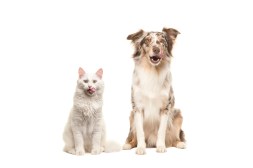Understanding Cat Body Language: What Your Feline Friend is Trying to Tell You
Cats are mysterious creatures with unique ways of communicating. Understanding cat body language can deepen your bond with your feline friend and help you respond appropriately to their needs and emotions. In this article, we will explore the various signals that cats use, allowing you to interpret what your cat is trying to tell you through their body language.
The Importance of Understanding Cat Body Language
Cats rely heavily on non-verbal cues to communicate both with humans and other animals. Unlike dogs, who may bark or wag their tails to express themselves, cats use their posture, tail position, ear orientation, and even facial expressions. By understanding these signals, you can better meet your cat’s emotional and physical needs while fostering a harmonious environment at home.

Tail Position: A Window into Your Cat’s Mood
The position of a cat’s tail can reveal a lot about its mood. A tail held high usually indicates happiness or confidence, while a low-hanging or tucked tail may signify fear or submission. If your cat’s tail is puffed up like a bottle brush, it might be feeling threatened or startled. Observing these nuances can help you understand when your kitty feels safe and when it needs reassurance.
Ear Movements: Listening to Their Feelings
Ears are another important indicator of feline emotions. Forward-facing ears suggest curiosity or excitement; however, if the ears are flattened against the head, this could signal irritation or fear. Cats also rotate their ears independently to gauge their environment; pay attention when they do this as it often means they are alert and assessing potential threats.
Posture: The Overall Picture
Your cat’s overall posture plays an essential role in understanding its feelings as well. An upright position with relaxed legs indicates confidence and contentment; conversely, if your cat crouches low with tense muscles or hides away in corners, it may be feeling scared or stressed. When interacting with them during these times, approach slowly and give them space as needed.
Facial Expressions: The Subtle Signals
Finally, don’t underestimate the power of facial expressions in communicating how a cat feels. Slow blinking often signifies trust and affection—if your kitty gives you slow blinks while looking at you, try returning the gesture. Additionally, observe for whisker positioning; whiskers that are pulled back indicate anxiety while forward-facing ones display interest.
By being attentive to these various aspects of body language—tail movements, ear positions, posture changes—and facial expressions—you can create a deeper understanding between yourself and your feline companion. This knowledge not only enhances the relationship but also contributes significantly toward ensuring that they feel secure in their environment.
This text was generated using a large language model, and select text has been reviewed and moderated for purposes such as readability.


